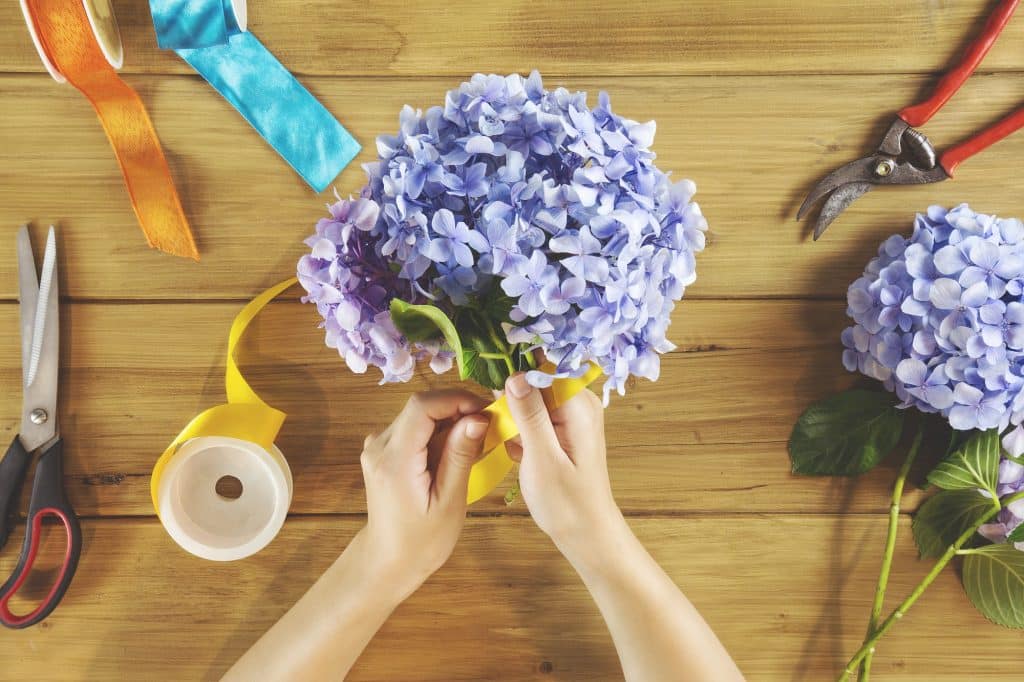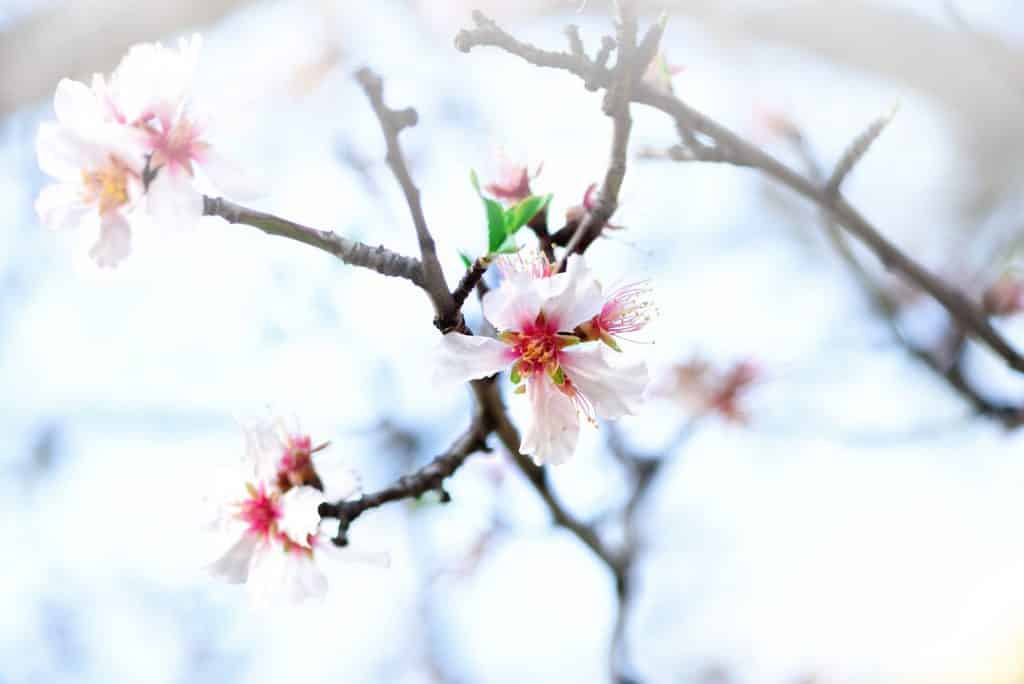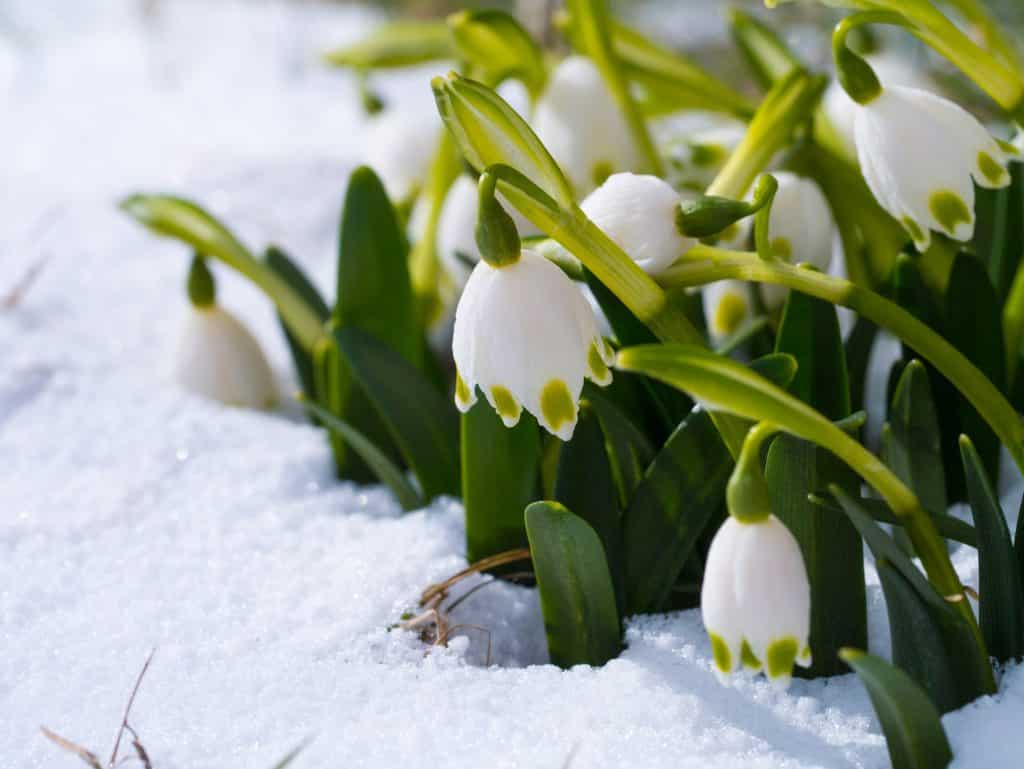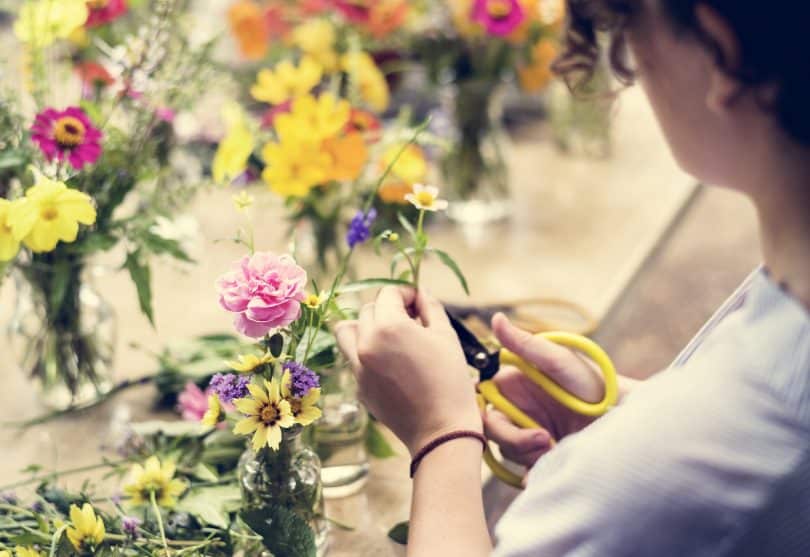The business of flowers is often forgotten, but it’s present just about everywhere—weddings, receptions, parties, work events, and more. It’s especially popular around the holidays when people are looking for gifts, but it’s also common to give them as “get well” or congratulatory gifts. They’re especially popular among photographers when looking for a bright accent for their subject to hold or to spruce up a dull background.
What is Floristry?
Floristry is the production and trade of flowers and is most commonly associated with beautifully arranged floral displays. Whether it’s a giant bouquet of flowers decorated for Valentine’s Day or a simple arrangement to brighten up your home, you’ll find many different styles and ways of creating impactful pieces. You’ll find that, especially around the holidays, floral arrangements can often include many things other than flowers—synthetic garlands, ribbons, and even things like fruit and candy.

What You’ll Need to Get Started
There are very few things you need to get started and everything is relatively cheap. The biggest investment is often the vase, which is something you’ll probably hold on to for many arrangements to come.
First, you’ll need the obvious—flowers. If you have a garden, you’re already a step ahead! Other places you can look for flowers are neighbors’ gardens (with permissions of course), the local flower shop, or a nursery with cut flowers. Longer stems are always preferred since you can adjust them to the vase you have. You can always go shorter, but it’s more difficult to work with stems that are too short.
Flowers commonly used in arrangements include roses, chrysanthemums, tulips, lilies, narcissus, freesias, carnations, and sunflowers. There are many more based on what’s commonly available in your area, but the ones above are pretty much available regardless of location. These won’t be the only plants that make up your arrangement—you’ll want to include plenty of greenery and woody things as well!
Other things you’ll want to have for your first arrangement include floral shears, netting, and tape, along with any other things you want to include in your arrangement. If you don’t have floral netting available, you can also substitute chicken wire or something similar.
Lastly, if you’re using a clear vase, you’ll also want some kind of filler—rocks, like the ones used in fish tanks, sand, glass, shells, and other decorations can go nicely depending on your theme. Otherwise, a solid, white bowl or vase does nicely for any arrangement.
Decide How Your Arrangement Should “Sit”
If you’re using a bunch of flowers, you’ll definitely want some sort of floral mesh or chicken wire to support all the stems. This is better for larger arrangements that need a sort of “rounded” look, as you can set the mesh in a shallow vase and have flowers sticking out at different angles.
If you’re working with just a few flowers, you probably won’t need any sort of mesh. Simple arrangements can include one of each flower and may sit in a clear vase with just a bit of twine or ribbon holding them together. Twine adds a unique look and goes nicely in displays with clear vases.
Pick Your Flowers
You’ll want a few different kinds of flowers—usually an odd number—accompanied by some greenery and/or branches. There are typically four parts to an arrangement—your foundation, focal point, highlight, and frame.
The foundation should use flowers with large, full blooms, usually with subtle colors. Your focal point should be medium-sized flowers with strong stems that can tower above the rest. These can be more vivid and bright and should be the most noticeable part of your arrangement.
The highlight is meant to harmonize with your arrangement and can be as bright or as subtle as you’d like, but should complement your focal point.
Your frame should be greenery or branches that can go along the outer edge of the arrangement. Branches with flowers also look nice, like almond branches with blooms or buds.

Start with the Frame and Greenery
Your frame, which should be made of woody or strong foliage, can help support your arrangement. Depending on how large the leaves are, they may need some help standing up if you’re using a small vase. This is where wire stands/supports come in handy.
Things like almond or cherry blossom branches make a nice frame. Things like calla lilies can provide both nice greenery and subtle blooms with the right colors.
Start long, measure against the vase, and trim accordingly. Trim a tiny bit at a time—you can always go a little shorter, but if you go too short, you can’t make it longer again! Hold it up to the vase to get an idea of how tall your frame will be. It’s okay for different pieces to be varying heights. You can use that to lead attention to different parts of your arrangement.
Find Your Foundation and Add a Focal Point
Your foundation is the bulk of your arrangement. This can be one solid color or a bunch of similar shades. Look for flowers with large, broad blooms that take up a lot of space. This is your “landscape”. You can use them to fill in the gaps and hide your supports and netting. Since these will likely be your largest blooms, you’ll want to add all of these first, lest you risk hiding the other flowers.
Once you have a good foundation, start adding your focal point. Flowers like ranunculi, peonies, roses, dahlias, and magnolias are examples that make exceptional focal points. Tulips also come in a wide variety of colors and go beautifully as the star of an arrangement. You’ll want more vibrant and darker flowers, usually medium to larger ones to serve as the focal point. Group them together in a cluster to draw attention to a single area. Spreading them out in a linear fashion can sometimes work, but in general, you’ll want a strong, single focal point to your arrangement.

Adding Highlights and Completing Your Arrangement
Lastly, add your highlights. These are often lighter flowers and leaves that add a pop of color or lighten up your display. Plants like artemisia have beautiful, silvery leaves that can help lighten your arrangement. Snowdrops, heliotropes, daisies, and jasmine all have small white blooms that complement just about any arrangement. Wisteria is a climber that has cascading blooms and looks nice draped over the edge of a wide-mouthed vase.
Highlights are often plants with weaker stems and subtle blooms that can be supported by other parts of your arrangement. You can weave these into your piece and scatter them to add subtle visual appeal.
If you’re working with fewer flowers, you can tie your arrangement together with a ribbon (preferably something lighter-colored) or twine. Twine adds a rougher look that contrasts with smoother stems and looks nice in certain arrangements.
How to Keep Your Arrangement Fresh
Flower arrangements don’t last forever, but you can keep them “alive” longer through proper care and use of liquid plant food. Some plants (particularly ones that still have some roots) can be kept alive purely with water and supplements, but for the most part cut flowers have a fairly short lifespan.
I’ve included some of my favorite plant food below, in addition to a few resources to inspire your new creations.
Looking for more outdoor activities? Check out our guides on gardening and foraging! Share them with a friend who’d be interested in learning a new hobby with you.



















